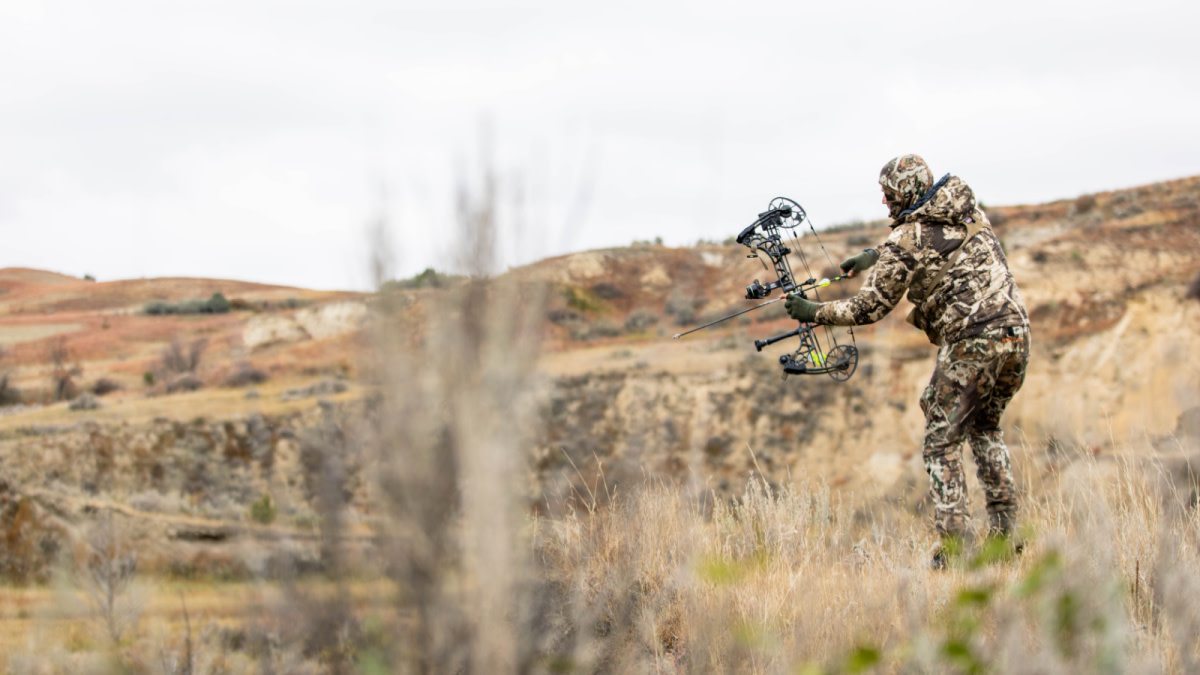
Let’s be honest, even if you say you’re happy hunting whitetails on your back 40, deep down you’ve always wanted to try chasing mule deer out West. Why not make this the year you finally do it? The good news is archery deer tags are still easy to come by and there are fewer barriers to entry than you’d think.
E-Scouting for Mule Deer The first step is to pick a state with favorable draw odds. This allows you to return either every year or every other. Experience is the best teacher and by returning to the same general area every year you’ll learn the ins and outs of the unit. You shouldn't get complacent after a few years of doing the same thing, though. As Tony Peterson has previously wrote about, the best way to sharpen your hunting skills is by going to a new area.
The next thing to consider is seasonality. Do you plan to hunt early season or does an October trip fit your schedule better? Either choice can be productive, as long as you choose your hunting location accordingly. On opening weekend, areas close to the road can be highly productive as the deer have yet to be pressured. Conversely, after a week or two of being hunted, public land bucks will become reclusive. Later in the season, you’ll find more success hunting unpressured areas. Look for spots that are difficult to access or easily overlooked by fellow bowhunters. Often a whitetail sanctuary looks similar to a mule deer sanctuary.
When doing your homework on onX, it can be difficult to pinpoint what good mule deer habitat looks like. As a general rule of thumb, I like to scout the terrain instead of the deer. I keep my weapon of choice in mind and look for terrain that will allow me to effectively get into bow range. Doing so on an expansive sage flat with little to no terrain to conceal the approach can be a tall order. Look for features conducive to both stalking and glassing. Topographical features and broken terrain also create predictable bedding opportunities for the deer.
Mule Deer Hunting Logistics Have a plan and stick to it. During your e-scouting, designate plans A to Z. Having multiple tracts at your fingertips can make or break your hunt when plan A is out the window on day two. When time is limited, logistics and efficiency matter a lot.
One of the easiest ways to be efficient is to camp close to your hunting location. During my first several trips out West pursuing mule deer, I would camp in designated campgrounds 30 minutes to an hour away from my hunting location. I quickly realized how inefficient this strategy was and highly suggest leaving luxury behind to minimize your commute time. Less time driving to and from camp maximizes your hunt time and, arguably as important, your sleep time. Get familiar with the camping regulations of your chosen state and find a proximal piece of ground that is open to camping.
Glassing and Stalking Tips Glassing and stalking each seem straightforward, but they are truly refined skillsets. To shorten your learning curve, bring a buddy. Having a buddy to flag you into the deer exponentially increases your odds of success. Before the stalk, establish a few hand signals that will be used to guide you into position. Next, be disciplined in your glassing regimen. The more time you spend glassing, the more opportunity you will find.
Like whitetails, mule deer are most active at dawn and dusk—especially in September and October. But that doesn't mean there aren't midday opportunities in the early season.
Mule deer typically get out of their beds around midday and seek a new bedding location out of the sun. Shaded areas become a refuge and are prime areas to focus your midday glassing. Mounting your binoculars on a tripod will assuredly increase the number of deer you spot during long glassing sessions. Another important consideration is having multiple glassing locations pre-selected. The last thing you want to do is bounce around at sunrise in search of a productive glassing nob. Likewise, a glassing nob with the wind at your back will also put you at a disadvantage. To combat this situation, have multiple vantage points selected for differing wind directions.
When it comes to stalking, you will quickly learn to study the terrain and vegetation before beginning your stalk. The terrain will look completely different from ground level and your memory will be tested. As you close the distance, on calm days you might need to silence your footsteps. Taking your boots off and slipping on a pair of bulky rag wool socks works well for tender feet. When the moment of truth finally arrives and you’ve closed the distance, suppress your adrenaline and wait him out. A mule deer standing on his own time will present a much better shot opportunity than a buck that’s been startled. The only caveat is when time is not on your side or if shifting winds force your hand.
A quality Western hunt is easier to obtain than you’d think. The hardest part is initiating the plan. Drop some waypoints on the prairie and you’ll be pleasantly surprised with the result and enamored with the Western experience.
Editor's Note: First Lite’s Whitetail Sale just got extended through 10/19! Along with everything a whitetailer needs, they’ve also added discounts to some of our favorite Western gear. Whether you chase whitetails in the East, muleys in the West, or something in between, there’s a piece of technical hunting apparel on sale right now that’ll fit your needs. Click here to shop.
Feature image via Captured Creative.






